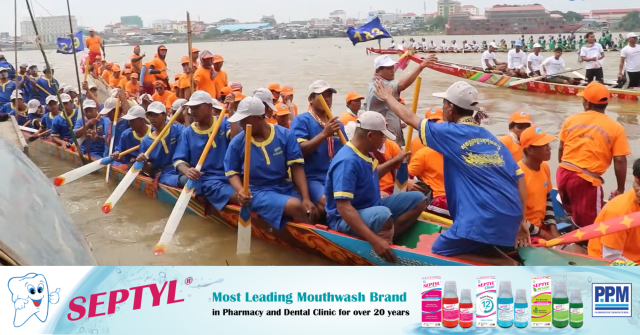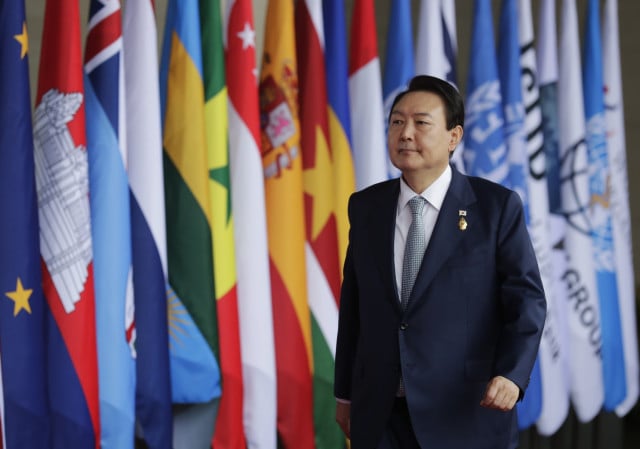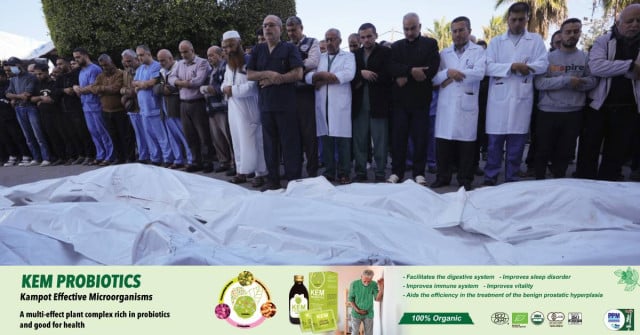The Origin of the Water Festival

- By Ky Soklim
- November 26, 2023 9:00 AM
PHNOM PENH - Long ago, the tradition of boat races as we know it today was conducted in local areas by people using their day-to-day fishing vessels. However, after a king moved his capital city to Phnom Penh, the boat racing celebration became a much more grandiose and royal activity.
After being postponed for a number of years due to the pandemic, the government decided that the Water Festival will be celebrated again from November 26 to 28. The main celebration will be in Phnom Penh while smaller celebrations will be held in some provinces.
Ky Soklim, senior journalist of ThmeyThmey News, interviews Professor Ang Choulean, a renowned ethnologist of the APSARA National Authority who has spent decades studying people’s traditional way of living.
_1700959479.png)
Ky Soklim: Could you, professor, please tell us the meaning of the Water Festival and related celebrations?
Ang Choulean: The complete official name of the celebration is “preah reach pithi bon om tuk, bandet pratit, sampeah preah khae & ok ambok,” (the royal boat racing, floating lantern festival, worshipping the moon & eating roasted flattened ripe rice).
Based on its name, there are four things to consider in this event. These are relatively new but not so recently new. The celebration was created during the reign of King Norodom (reign from 1860-1904). Although it is quite recent compared to the longer span of history, it has become a tradition for the Cambodian people since, perhaps, between 100 and 150 years ago. If we visit the national archive, maybe we can get a more accurate timeline.
_1700959559.png)
The celebration was created when the king moved the city from Udong (45km away) to Phnom Penh. Before he moved, there was no water festival here. Furthermore, the Royal Boat Racing Festival created by the king is also different, in terms of timing, from the normal boat racing festival which is conducted locally by local people. In villages, people would use their normal fishing boats to race for fun.
The local people did not call it a “water festival” either. They called it “bon chenh vassa”. The local celebration is conducted during the time when monks have completed the three-month retreat, also called Buddhist Lent, inside the pagoda for religious training.
_1700959635.png)
Monks, also being sons of villagers, are excited once they can come out of the pagodas and reunite with their family. Exactly a month later, another celebration called “ok ambok” (eating roasted flattened ripe rice) is celebrated which has nothing to do with the water festival.
However, I imagine that the royalty wanted to celebrate something grandiose in the city. Since these celebrations are only a month apart, perhaps King Norodom thought of combining them.
In Phnom Penh, the two celebrations are combined but are held separately in local areas.
Ky Soklim: Why is the festival celebrated in front of the Royal Palace?
Ang Choulean: In Phnom Penh, it is celebrated in front of the Royal Palace since the four-faced river exhibits a unique flow. As one of the four rivers is connected to a giant lake, called Tonle Sap lake, about 300km northwest of Phnom Penh, the water in Tonle Sap river reverses direction annually.
Tonle Sap lake, depending on the dry or rainy season, acts like a sponge to absorb and release the excess water from the Mekong River further north. During the dry season, when the water is low, water from the Mekong river, the Tonle Sap river and the Tonle Sap lake flow south towards the sea.
_1700959736.png)
For that reason, the Water Festival is conducted to celebrate the flow of water reversing its course from the mainland back into the sea. Earlier, during the last day of the Water Festival, the Brahman priests of the palace, called Bakou, who stayed on a boat in the middle of the river, ceremonially cut a ribbon signalling this flow back into the sea.
In reality, this is just a resemblance. The water will flow nevertheless. The fact that four rivers meet in conjunction, the water flow that can be reserved and the presence of the Royal Palace, in one way or another, contribute to the creation of the royal water festival here in Phnom Penh.
We are not sure how many boats were present during the time of King Norodom. However, we know that during the time of Sangkum Reastr Niyum regime (1953-1970), immediately after the French colonial era, the Water Festival became much more popular. Back then, racing boats were smaller. They could only handle a bit more than 30 rowers.
_1700959835.png)
Ky Soklim: Does the story of the Water Festival have anything to do with naval combat in ancient times as depicted on the bas-reliefs of temples?
Ang Choulean: As a researcher, I do not consider this story a correlation with the historical naval combat. I do not believe it at all, but also, I do not interfere with anyone who believes in it. We can see the tradition being practised at the local level for a very long time as mentioned above. And later on, the king also invested more into the tradition by making it even more grandiose in the city.
_1700959891.png)
Ky Soklim: Why is there a dancer at the front of the racing boat?
Ang Choulean: The dancer does of course play a part in boosting the morale and the synchronisation of the rowers. However, we also need to know that people consider these racing boats as spirits. Sometimes, the boat is decorated with hairs or even eyes and given a name. The racing boat can only be stored inside the pagoda.
_1700959987.png)
Ky Soklim: Why the pagoda?
Ang Choulean: These racing boats are believed to be embodied by a type of spirit called “preay”. Pregnant women are forbidden from being close to the racing boats to avoid bad luck. Again, this is just a belief. When the boat exits the pagoda for training, pregnant women are also told to avoid going nearby. Some people believe that only pagodas can handle such spiritual strength.
_1700960048.png)
The dancer also needs to understand the movement of the boat based on the material composition such as the differences of woods being used to make the boat. Sometimes, there is no dancer. However, there is a senior man who sits in one position while he moves his oar around in a particular motion while chanting some specific magical spell. They have to follow a specific tradition when it comes to boat racing.
_1700960105.png)
Conducted in Khmer for ThmeyThmey News, the interview was translated by Ky Chamna for Cambodianess News.















